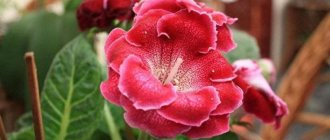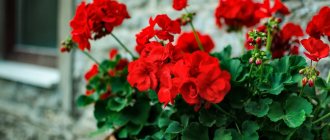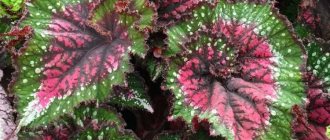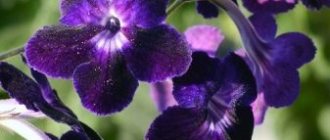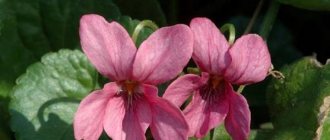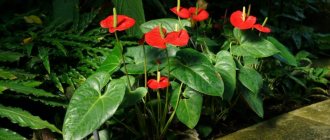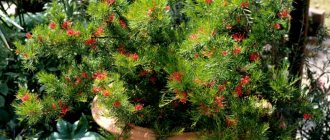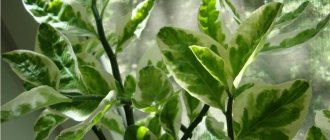Forest violet or Viola (from the Latin Viola) is a modest, delicate and beautiful flower of the northern latitudes. Various sources describe from 500 to 700 species of this wild plant of the Violet family. They grow primarily in the Northern Hemisphere in areas with moderately cold climates.
The plant is native to East Africa. Viola was first shown at an exhibition in 1893. Since then, cultural selection of flowers began.
Most species are found in North America and Japan. But wild violet grows in the Andes, Australia and New Zealand. In Russia, cultivated varieties are more common - Pansies.
The herb of individual forest violets has medicinal properties.
Description of the forest violet
The plant is perennial, low, creeping. Compact bushes up to 15 cm in height. Branched rhizomes produce new shoots every year, on which young rosettes of leaves are formed. One specimen can grow in two years and occupy an area of 1 m2.
The violet has no stem; the leaves are small or large, round, heart-shaped, depending on the type, and collected in a rosette. The lower tier of leaves is noticeably larger than the upper. The leaves do not die off in the winter; they overwinter under the snow. The fact that the leaves are heavily pubescent over the entire surface helps them cope with frost.
The flowers are five-petaled, multi-colored, very beautiful. Small – up to 1.5 cm in diameter. Some have a pleasant subtle sweetish aroma. The smell is stronger in the morning and evening hours. In hot weather there is almost no smell.
The colors vary from soft blue and light blue to violet and lilac. The core is predominantly in shades of yellow, bordering on white.
The forest violet blooms already in April, when young leaves have not yet appeared. Flowering lasts until September. Wild viola serves as a honey plant, but does not require outside pollination. Reproduces vegetatively.
In autumn, the fruit ripens in a capsule with small, moist brown seeds.
When and how did it appear?
East Africa is considered the birthplace of the flower.
Baron Adalbert Saint-Paul in 1892, while walking, saw a flower among the stones in Tanzania. The plant grew in a crevice. His attention was attracted by the buds of a delicate blue color with yellow specks.
His father owned a collection of rare plants. Adalbert decided to send his father a new flower. And already in 1893, the violet was first shown to people at an exhibition .
Since then, breeders began to breed more and more new varieties of violets, which differed in size and shades.
Types of forest violets
In Russia, about 20 species are found in natural conditions:
| Name | Growth | Description of flowers | Flowering period |
| Tricolor (Pansy) | In the forest and countryside - on arable land, in vegetable gardens, like weeds. | The upper two petals are blue, the lower three are white, and the center is yellow. | May – September |
| Doggystyle | On the edges, in sparse young growth and in the field. | Small, even blue color. | May |
| Bolotnaya | Damp places are not only swamps, but also mossy forests and water meadows. | Light blue, almost white with dark veins. | May – August |
| Field | Fields, forest clearings, forest edges, roadsides. | Similar to the Tricolor, but white, miniature with a bright yellow mouth. Height up to 30 cm. | April – September |
| Fragrant | Forest | Purple, bright blue, with a pleasant sweet aroma. | April May. |
| Altai | Mountain slopes. | Violet-blue with a yellow center. Height up to 20 cm. | From the end of April 40-45 days. Repeatedly in September until the first snow. |
| Yellow | Fertile soils of sparse, well-ventilated forests. | Yellow-green, bright. There are purple veins on the back of the petals. | June July. |
| Kholmovaya | In light forests, on open slopes, under bushes. | Light blue, occasionally purple, fragrant. Large, on a long peduncle. | May June. |
| Notched | Endemic to Siberia. Not found in other areas. | Bright purple, graceful, raised above the bush. The shape resembles cyclamen. | June July. |
| Aetolian | Sunny places, loose soils, rocky ledges. | The upper petals are yellow, the lower petals are orange. | From May and all summer. |
| Dubravnaya (mountain) | In the European part of Russia, at the foot of the Caucasus Mountains, in the south of Siberia. | Light blue, similar to dog violet flowers, but larger, and the stem is higher - up to 25 cm. | May – July. |
| Peach leaf (pond) | Rarely found in central and some regions of Siberia. | Long peduncles, small flowers of a characteristic milky white color with blue. | May June. |
| Purple | A rare species, it grows only in the Caucasus mountains. | It blooms profusely with small purple flowers, collected in an inflorescence-spike of 20 pieces. Pleasant, but doesn't smell much. | Twice – in spring and autumn. |
Sowing seeds and caring for forest violets
The seeds germinate three weeks after planting. Moreover, they can be sown in spring, summer and autumn. Only freshly harvested seeds are used, as they lose their viability the following year.
You can grow seeds and seedlings. To do this, take ordinary leaf soil, add sand, peat and a little humus to it. The small achenes are simply laid out on top of the loosened soil and lightly sprinkled. Then the area is moistened and covered with film.
The only thing that is required after the seeds are in the ground is daily watering and aeration until germination.
Field violet is easily propagated by seeds. It is easier and faster to plant forest plants by digging up the budding rosettes of leaves. This is done after spring flowering. In the fall, plants may not have time to take root before frost.
They dig up an adult bush and select young rosettes with roots, which will serve as planting material. Large bushes are planted one at a time, small bushes - two at a time. The distance between seedlings is 20-30 cm.
So, already in the second year the forest violet will bloom in the garden or under the window.
The advantage of the plant is that it does not require constant careful care. The wild violet winters quietly without shelter and is drought-resistant. It prefers shaded areas of the garden, but can also grow in sunny meadows if you don’t forget to water it.
Viola reproduces well by self-sowing. In this she is assisted by garden ants, who carry the seeds around the area.
Fertilizing with regular humus infusion or complex fertilizers for flowering plants. But this is exactly the plant that is better to underfeed than to overfeed. For better rooting, young shoots are mulched with light humus.
In shady places, viola flowers are paler, but flowering lasts longer. She doesn't like stagnant water in the soil - she starts to get sick. Therefore, it is better not to grow it in the lowlands.
The creeping nature of the shoots is advantageous on gentle slopes and alpine hills, where forest violets grow to form a blooming carpet.
We must be prepared for the fact that the plant may fill more than the area allocated for it. In such cases, it will be necessary to remove the shoots by pinching or cutting them, like the mustache of garden strawberries.
Diseases of forest violet
The worst enemy of violets is disease.
| Disease, pests | Signs | Causes, pathogens. |
| Root rot | The roots rot, then the stem and leaves. The plant dies. | Pathogenic fungi that can remain dormant in the soil for a long time. Fungal disease occurs at low temperatures and high humidity. An acidic soil environment contributes. |
| Gray rot | Gray fluffy coating on the upper parts - peduncles and seed pods. | |
| Powdery mildew | A white coating in the form of powder on leaves and flowers. Most often occurs in early summer. | |
| Rust, spotting | Brown spots on green parts of plants. Drying. | |
| Smut | Swelling blisters on the petioles and leaves, filled with dark liquid. | |
| Blackleg | Disease of seedlings and seedlings. The base of the stems darkens, the leaves droop. Death occurs within 3-4 days | |
| Late blight | Penetrates through the pistil or thin roots. | |
| Variegation | The leaves acquire a variegated, marbled color, dry out and die. | Virus. Carried by aphids. |
| Ring mosaic | Rings of dark green color on the leaves followed by necrosis. | |
| Clover cutworm (pearl cutworm) | The tips of the leaves are eaten away. It develops from May to July during the feeding period of the larvae. | Moth larvae with a wingspan of no more than 4.5 cm. Orange with black speckles, the back side of the wings is silvery-pearl. |
| Nematode | The above-ground parts or roots are affected, depending on the type of parasite. Plants are oppressed, lag behind in development, and their decorative properties suffer. | Parasites – aerial and ground nematodes (strawberry, root-knot). |
Fighting diseases of wild violets is very difficult. Often the entire plantation dies. If the species is rare and it is not possible to restore it, you should still try to save the plant.
Diseased parts are removed and affected plants are destroyed. For survivors, they are sprayed with special antifungal drugs and potassium-phosphorus fertilizers are applied.
Pests
Separately, we should talk about pests. The violet may have quite a few of them:
- Cherevtsy. Insects, such as aphids. From their bites, violet leaves lose their shape and red spots appear on them. Control agents: insecticides, for example, Fitotherm
- Thrips. They can get into the apartment along with poplar fluff. Violet flowers are striking. Fight thrips with Akarin
- Common aphid. Most often it sits on the growing points of leaves and flowers. Often, manual collection of such aphids is difficult, so a solution of soap and water is used
- Ticks. Flowers and leaves are affected. The main anti-tick remedy: Akarin
In any case, if a plant is attacked by pests, it means that its immunity is weakened. This is primarily due to violations of plant care conditions. As cliché as it may sound, the beginning of getting rid of pests lies in providing the violet with enough light and a moderate amount of water.
However, if this is all right, you can try means to increase the plant’s resistance to external influences and diseases. This could be, for example, Epin or Zircon.
Affected by ticks
Diseases
illnesses
- violet does not bloom - underdeveloped root system, excess nitrogen, little light.
- Spots on violet leaves - watering with cold water, draft, sunburn.
- Reduced leaf turgor – lack or excess of moisture:
- if there is little moisture, water the violet and cover it with film for 2 - 3 days;
- excess can lead to root rot, which can cause the violet to die. Examine the roots of the violet and blot them with a napkin. The rotten parts are removed and the trunk of the plant is inspected: if it is healthy, the violet is transplanted into a smaller pot; if it begins to rot, the plant is re-rooted. If the roots are intact, the flower is transplanted into new soil, covered with film and not watered for several days.
- Violet buds do not bloom - the air in the room is very dry (put an open jar of water next to the violet);
- Small leaves in the center of a violet rosette - very bright lighting or dry air (shade the flower, place an open jar of water next to it);
- Drying edges of violet leaves - soil soaking, lack or excess of certain nutrients (re-root the violet, adjust fertilizing).
- White coating on violet leaves – powdery mildew (fungicides are used);
- Yellow or red spots on the leaves - a lack or excess of certain nutrients; when the yellow spot has a round shape and is located on the side of the window, sunburn is suspected (damaged leaves are removed, the flower is shaded or rearranged).
- Saintpaulia violet leaves rot for various reasons:
- excess moisture or fertilizers (remove damaged roots, reduce watering, adjust fertilizing);
- the physiological process of leaf dying (leaves affected by rot are removed in a timely manner);
- incorrectly selected soil (add vermiculite, sand, increase drainage);
- moisture getting on the leaves during watering (they immediately get wet);
- fungal diseases - fusarium or gray rot (observe the temperature regime; do not over-moisten the soil; use insecticides);
- the room is too hot or cold; dry air (find a more suitable place; adjust the temperature; use humidifiers).
It is easier to prevent the appearance of stains, root rot and other damage to the violet than to treat it for a long time. To do this, you must immediately provide competent care for the flower. As a top dressing, use a special fertilizer for violets.
Use in folk medicine
The plant contains large quantities of essential oils, flavonoids, vitamins A, C, E, fats, and carotene. Due to the alkaloids it contains, it is poisonous. Therefore, it should be used in home medicine with caution. It would be best to consult a doctor.
Forest violet helps in the treatment of many diseases with folk remedies:
- Febrifuge.
- Gargle with a decoction for inflammation.
- Promotes the separation of mucus from the respiratory tract.
- Treats headaches.
- Has a diuretic effect.
- Has disinfecting properties.
- Hemostatic - for women with complications after childbirth and during menopause.
- Anti-allergenic, helps with diathesis in children.
- Antirheumatic (in the form of compresses)
In aromatherapy, the smell of violets calms the nerves, even helps with excitability, hysteria, and seizures. Increases vitality and immunity.
In cosmetology, violet oil smoothes wrinkles, heals cracks and chapped lips. In high concentrations, violet extract is poisonous. Therefore, violet-based preparations should be used with caution and kept out of the reach of children.
Classification by leaves
Fragrant violet: description, cultivation
Hydrangea paniculata white, red, pink - the best winter-hardy varieties
Few people know that the color of violet inflorescences and leaves is inherited together, since this is influenced by its genetically linked characteristics. Varieties with almost black leaves have a burgundy or purple flower color, and those with light leaves have white flowers.
But sometimes hybrids appear that stand out from the crowd and attract attention. They look extremely impressive
Light Frost and Orchard's Night Light have an almost black rosette and white inflorescences. There are also varieties with white leaves.
Varieties of violets with names can puzzle even the most experienced gardener. In some cases, a description of leaf color can help identify the plant variety.
Collectors rarely pay serious attention to the coloring of the reverse side of the sheet, but breeders never make such an oversight. Only a small number of plants have silver, pink or red undersides
Typically, silver-green is characteristic of plants with white and pink flowers, and the red back is characteristic of purple and burgundy varieties.
Unusual violet leaves
Speaking about colors, it is worth mentioning the variegated color and its variants. The variegated mutation is valued for its decorative properties. In this case, abnormal groups appear among normal cells that lack green pigment. Variegation comes in different types: in the form of spots, stripes or streaks.
In any case, all violets are worthy of attention and detailed description, but within the scope of this article a superficial introduction is sufficient. Each variety has unique characteristics, so any gardener will choose a suitable specimen for himself, and maybe several at once for his collection.

